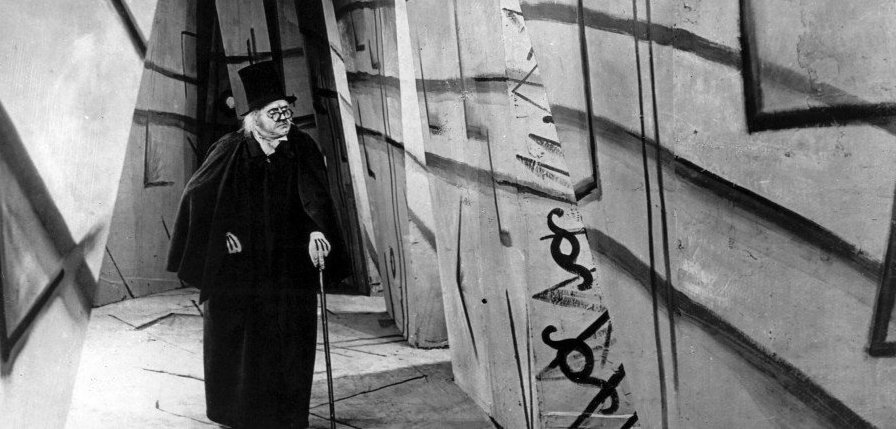On Saturday night, I had the pleasure of attending an event for the 100th anniversary of the famous German expressionist film, The Cabinet of Dr. Caligari (Das Kabinet des Dr. Caligari) by director Robert Wiene. As a part of its KinoKonzert series, the Goethe-Institut in Australia invites composers and artists to play original scores in time with various silent films on the big screen. I and my wife Natasha made the trip up to the Chauvel Cinema in Sydney to attend the event, after I discovered it through a post in my LinkedIn feed.
I recalled seeing at least some parts of Caligari years ago but had forgotten much of it; this celebration seemed to be the perfect opportunity to view it in a much larger format. With many films from this era having been lost, destroyed or now only existing fragments, Caligari was fortunately restored and upgraded to 4K resolution by the Friedrich Wilhelm Murnau Foundation (Murnau Stiftung), with the effort sponsored by Bertelsmann. This was no mean feat, as it required the location of particular missing prints from various cities in order to complete the film.
Avoiding any major spoilers for you, this influential film tells the story of a mysterious figure, Dr. Caligari, who travels to the town of Holstenwall to display his amazing spectacle at the local fair: a somnambulist named Cesare, who upon being awakened, can answer any question about the past or future. On the same day that Dr. Caligari and his somnambulist arrive, a number of horrible crimes occur elsewhere in the town.

Robert Horton of Seattle Weekly goes into more detail about the influence of Caligari (as displayed by Goethe USA):
The Cabinet of Dr. Caligari has been credited with helping launch a golden age of German film, which included dark masterpieces such as Nosferatu (1922), Metropolis (1926), and M (1931). Its use of décor and design to express the ideas and emotions of its characters influenced the Hollywood style of the horror film and the film noir…
Perhaps because of its artificial, almost hallucinogenic design, the film has aged better than many silent classics. It was conceived from the aftermath of one world war and may have predicted another, but a century after its creation, The Cabinet of Dr. Caligari has passed into timelessness. As the American critic Roger Ebert observed, “The film today still casts its spell.”
Indeed, the style of the film is incredibly distinctive and imaginative; it is easy to see where later noir films found their inspiration. Although much of the acting was melodramatic to suit the lack of audio at the time, it is visually spectacular and shot almost entirely indoors with a range of elaborate, painted sets.
Returning to the KinoKonzert itself, German-based Australian composer Ashley Hribar was enlisted to create an original soundtrack, fusing his classical skills with physical props, synths and other electronic effects. He was given a very warm welcome and introduction by Goethe representative, Jochen Gutsch.
As Caligari was presented on-screen, Hribar played multiple instruments and devices non-stop for the full 76 minutes. Some may question as to whether adding music to a silent film compromises the experience or is distracting; I can say that in this case, Hribar displayed enormous creativity in carefully matching his score with what was happening in the film, even timing electronic sounds with characters’ steps as they ascended and descended staircases. It only served to enhance the experience of the film. In addition, given that dialogue was reserved for frames with written German (and complimentary English subtitles), once you had finished reading, you had plenty of time to watch Hribar’s own performance at the side of the stage, before the action continued on the screen. It was marvellous to behold.

I can only commend the Murnau Stifting, Bertelsmann and the Goethe-Institut on their wonderful effort in bringing the film back to life for a modern audience; screening it in Australia at Palace Cinemas is particularly great. I have attended various films in concert before, however this was on another level, given the creation and live performance of an entirely original score by one person.
I will certainly be keeping an eye out for future performances in the KinoKonzert series and I encourage you to do the same.
This article is not a sponsored post. Featured image credit: Slant Magazine
